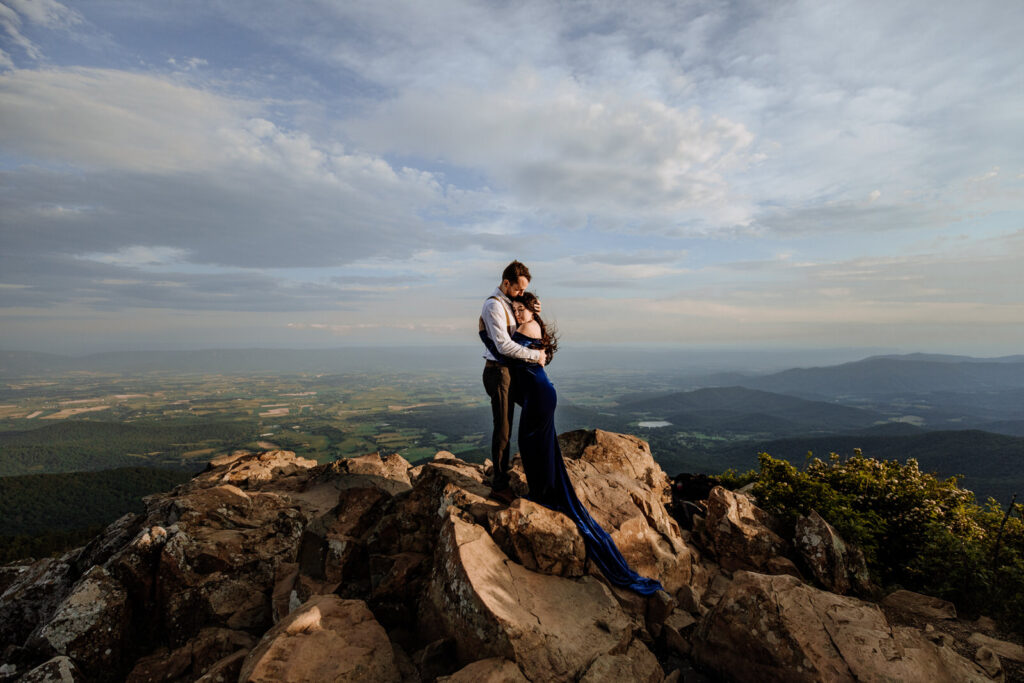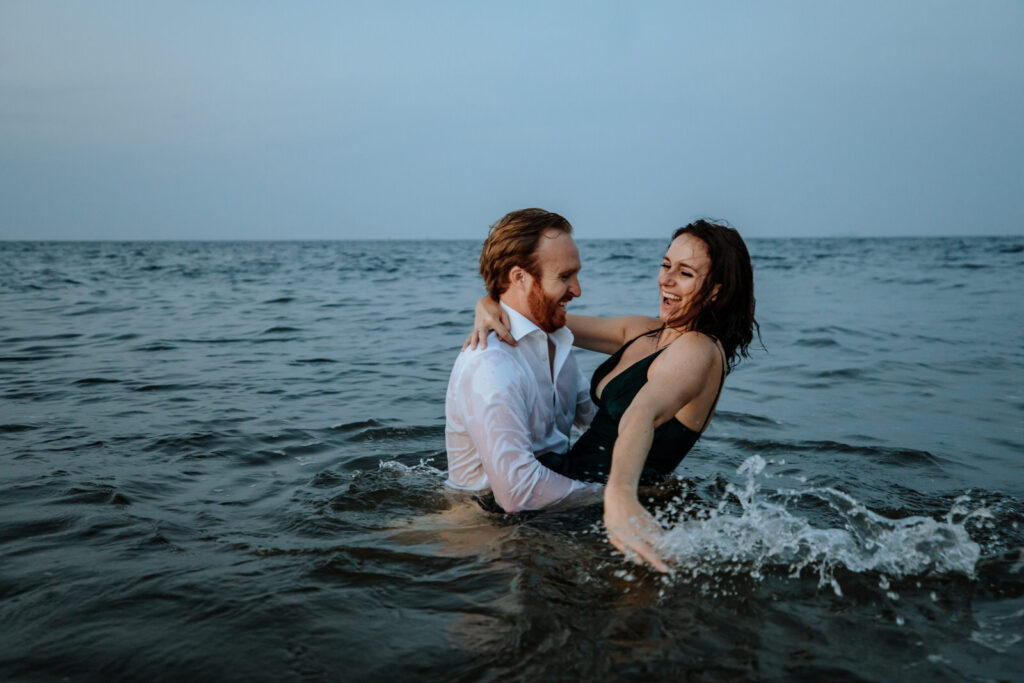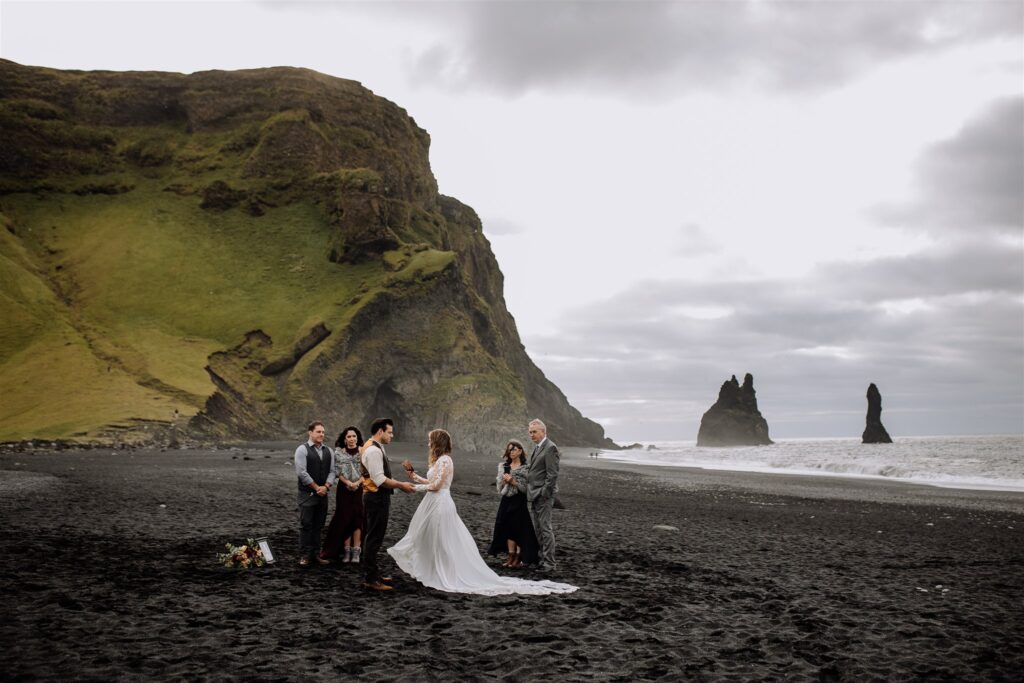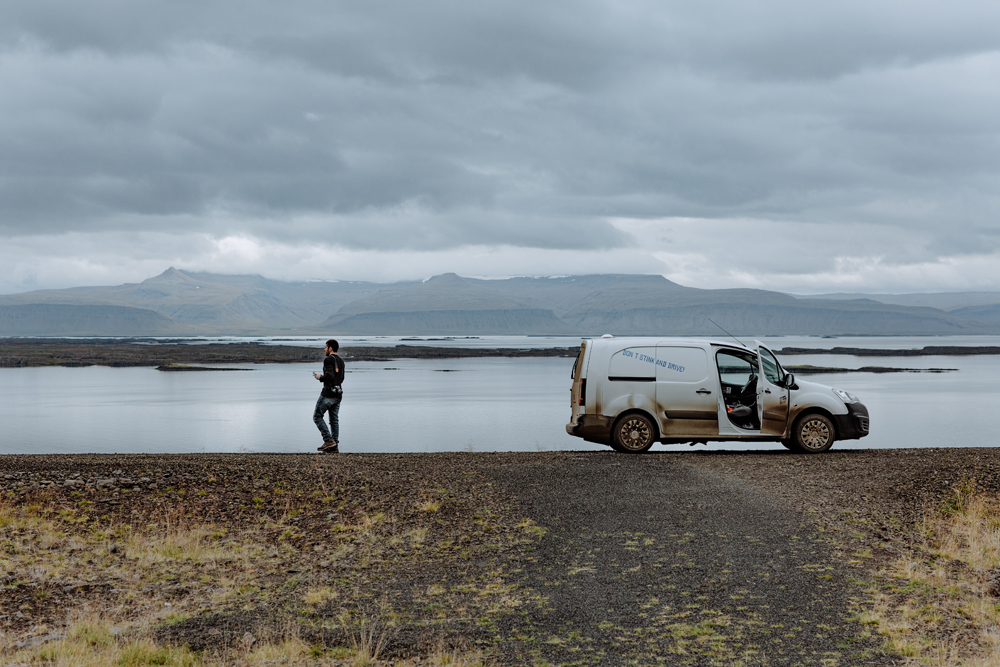We're a team of wedding, elopement and portrait photographers who put community over competition. We provide tips and resources for Photographers looking to up-level their businesses.
We're here to help When you join The Photography Business Academy
How to Break Into Destination Wedding Photography (GUIDE)
Ever have a dream of becoming a destination wedding photographer, but don’t know what to do or where to start? This post is for you!
Breaking into destination wedding photography is one of the most exciting pivots you can make in your photography business. It offers adventure, creative variety, and access to broader markets – but it also comes with unique challenges that photographers who just work in a more localized area don’t face.
Whether you want to go all-in as a destination elopement photographer or just take on a few travel-based gigs each year, this post will walk you through exactly how to get started. I’ll share not only the practical steps but also some personal experiences and mistakes to help you avoid common pitfalls.

What Is Destination Wedding Photography?
Destination wedding and elopement photography is any photography work that involves traveling outside of your typical service area. This usually means you’re capturing weddings or elopements in places that require a flight or significant travel – often out of state or even out of the country.
Your specific ambitions and how you personally decide to define “destination” will be up to you, but we’re going to cover a range of approaches in this post.
With that said…what really defines this niche is flexibility…
A destination photographer isn’t just limited to a hometown market (like working in just their city or state) – instead, they’re building a business that can more easily operate across regions, countries, or even continents.
That’s pretty cool, right?!
People are drawn to this niche for a few key reasons:
- Sense of adventure. The ability to work in beautiful, faraway places.
- Creative variety. Exposure to new landscapes, cultures, and traditions.
- Travel perks. Many photographers plan their own mini vacations around client shoots.
- Access to better markets. Especially important if you’re in a rural or low-demand area.
There is fundamentally a uniqueness of experience that comes with destination photography work, and it’s unmatched!
From my own experience, while I don’t exclusively brand myself as a destination wedding photographer (and personally focus more on local events, but am willing to travel for the right opportunities) – I’ve shot weddings across the U.S. and even internationally in places like Iceland.
These experiences have been some of my favorites to look back on, in particular because they were so novel – photographing on the dusky coast of Oregon is such a big difference than the rocky forests and country clubs here in Pennsylvania.
It’s rewarding, and over time, it’s led to regular inquiries from couples all over the world – even though I don’t go out of my way to market myself specifically for it on a regular basis (though – I should note here, I do have some destination focused blog content that attracts an audience via Google search…thanks SEO!).
A photographer who wanted to pursue even more destination work, maybe even considering it as their full time career, has even more opportunity (if they do the things required to bring it alive).

5 Steps to Becoming a Destination Wedding Photographer
Throughout this section, we’re going to walk you through the key things you will need to become a destination wedding photographer.
Many of these things mirror the requirements you’d have to get started as a wedding photographer even locally, but we’re going to highlight even more specifics to make these points more actionable to this niche.
Step 1: Build a Portfolio in the Markets You Want to Serve
Here’s the truth (and it might be hard for some of you) – very few people are going to be willing to hire a destination photographer without seeing proof you can shoot in that environment.
The hardest part of breaking into destination wedding photography (particularly in a way that is going to lead to any level of consistency in bookings) is building that initial portfolio. While it’s certainly possible to pick up the odd opportunity even without a dedicated portfolio, those lucky opportunities aren’t what you want to build a business on, right?
Here’s what you need to do:
- Choose 1–3 target locations. Think about where you’d actually want to shoot, and narrow your focus early on. We’re going to talk more about this in a second!
- Travel there intentionally. Budget for a trip, even if it’s just personal. Use it to shoot content, connect with vendors, or ideally, photograph a real couple (or multiple).
- Plan styled shoots. If you don’t have a client yet, set up a styled elopement or couples session with local models or travelers.
- Document your experience. Behind-the-scenes shots, travel tips, and insights will later become great marketing material.
Yes, this is a major investment. You’ll spend money on flights, lodging, transportation, and gear – likely thousands of dollars. But that investment is essential for credibility.
And remember…it’s filled with tax-deductible expenses if you’re using the trip to build your portfolio!
Focusing in on specific destination locations/markets
I want to draw some extra attention to the first point in that bullet point list…narrowing your focus to just a few target locations.
A problem many photographers who want destination work run into is that they are a little fish in a big (MASSIVE) pond.
Because destination photographers are getting hired to travel potentially anywhere in the world, it means clients have a near infinite amount of options.
This makes it very difficult to get hired if you’re not giving clients really tangible reasons to have interest in even checking you out.
By becoming an “expert” – a trusted source for photos – in a particular area…you give yourself more opportunities to focus your marketing.
The good news is…as you build up a presence in specific places, it opens the door to expand. And naturally, with good quality work especially, your marketing efforts may also appeal to people planning a wedding in different places as well!

Step 2: Shift Your Branding and Marketing
Once you’ve built your destination-specific portfolio, you need to make sure your brand and marketing materials aligns with it.
I’d argue this is one of the most important pieces of the puzzle when it comes to attracting actual paying clients for this type of work.
On a very simple level, think about this – if your website still screams “local weddings only,” you’ll miss out on many opportunities. If your website primarily speaks to a local audience and you shoehorn in some photos from a one off shoot in some destination…it’s also going to fall flat with the people who would want to hire you.
So how do you fix this? Let’s talk about that…
How to pivot your business (brand and marketing) toward destination work:
- Revise your client persona. The heart of every brand is getting clear on who they are going to serve. By doing a client persona exercise, you can get crystal clear focus. You will refer to this document regularly to help you make other business decisions!
- Something worth thinking about – a lot of times clients who hire destination photographers are not actually local to the place they are having their wedding. Instead, often they are people who are tourists traveling to a unique place for their event – and they choose to hire a destination photographer for many reasons including more cultural similarities (ie: couple in the US decides to have a wedding in Italy, and hires a US photographer to travel to Italy with them vs. hiring a local).
- Make other brand updates (visual and non-visual) to appeal to the right audience. There are a lot of things that make up your brand including articulating your offer well, defining your unique selling propositions (USPs), better understanding your competitors (and making yourself standout from them), as well as (of course) the visual side of your brand like colors, logos, graphics, etc.
- Have a website optimized for destination locations. You want to make sure your website flows effectively to guide users to taking the next step to reach out to you. And, I’d expect to see specific pages and content on your site talking about and showcasing more about the specific destination markets you are serving.
- Update your website copy. You want to make sure you are speaking to the needs of people who are wanting to hire a photographer for their event. Use SEO keywords like “Iceland elopement photographer” or “Grand Canyon wedding photographer” on their own dedicated landing pages.
- Feature travel images prominently. Your homepage, blog, and Instagram should lead with travel content and examples of destination work.
- Share travel tips. Build blog posts or guides around the areas you’ve worked in (great for search engine optimization and client value). You can start on content like this even before you’ve actively been to those places with some research of your own.
- Run ads and/or optimize SEO for specific locations. Pick a few high-potential cities or countries and focus your content and marketing efforts there.
If you want to go all in, niche your brand down entirely to destination weddings and elopements. It’s a strong position and gives clients confidence that you specialize in this kind of work!

Step 3: Offer Destination-Focused Packages and Pricing
Let’s talk about destination wedding photography packages and pricing.
You have to structure your services in a way that justifies clients flying you out versus hiring someone local. That means more than just good photos.
While a lot of pricing fundamentals will stand true whether you are photographing weddings locally or overseas, below you can find some key things that you can do to help yourself standout more in the sea of destination photographers!
What to include in a compelling destination photography offer:
- Expertise. Having knowledge of the area(s) you serve AND a willingness to do some heavy lifting for clients (like researching specific things to help them with planning) really sweeten the deal when it comes to hiring a destination photographer.
- Planning support. Help clients with timelines, local vendor suggestions, and location scouting.
- Travel-inclusive packages. One flat fee that includes your travel can simplify booking.
- Guidance and reassurance. Be the person who can confidently say, “I’ve shot there before—I know what to expect.”
We see these types of things time-and-again in photographers taking on destination work, and while it may shift your role from being “just a photographer,” it’s these additional considerations that make someone more likely to hire you and justify higher costs.
Destination wedding pricing tips:
- Research the average cost for a destination wedding photographer in your target locations. This is part of competitor analysis (something we cover in great detail in our Branding for Photographers course).
- Keep in mind you’ll likely charge more than locals due to travel and logistics – but you must justify the cost with added value. And keep in mind, your flights, lodging, car rental fee, etc. are not adding value, they are just adding costs…so because of this, you really need to find ways to set yourself apart from others, or clients won’t justify the additional expenses.
- Track your costs – flights, accommodations, meals, and time all need to be covered in your pricing. While you can charge formal travel fees, taking an all inclusive approach is preferred, makes it easier to sell, and moves focus away from how much all the travel pieces cost.
Let’s look at an example –
If local photographers in Spain average $2,000 per wedding, you might need to charge $5,000 to $6,000 (or more) to remain profitable once you factor in your travel costs and your cost of doing business.
What reasons would someone have for wanting to pay 2-3x (or more) for their photographer?
This is an open ended question and something to think about while you consider the target clients you are wanting to serve, but it’s an important one.
As it’s core – generally, this difference in rate means you need to bring extra value to the table.

Step 4: Protect Yourself with a Destination Wedding Photography Contract
This is a huge one: your destination wedding photography contract needs to be rock solid.
We talk about contracts (and generally being legally protected) quite often, since they are so important to running a successful wedding photography business. While they are definitely important even for photographers running local studios or working in small towns, once you add travel into your work requirements…the potential legal risk increases (because more things could go wrong)…
Think about things like these…
You’re dealing with variables like flight delays, weather disruptions, language barriers, and time zone issues. Potentially being paid in different currencies. Challenges with work permits and visa requirements. There is a laundry list of additional considerations you don’t necessarily have if you are just driving 20 minutes away. Your contract should account for things like:
- Travel interruptions and cancellations
- Emergency rescheduling or alternative coverage
- Who pays for what (lodging, meals, baggage fees)
- Backup plans in case you’re unable to arrive on time
Make sure your contracts are reviewed by a legal professional or tailored to destination work through contract templates written by lawyers familiar with photography.
While these things might sound a little scary, don’t let them entirely turn you off if your dream is to be a destination wedding/elopement photographer. You can absolutely create plans that make these things more manageable, and having solid contracts makes life a lot easier as part of this!

Step 6: Choose the Right Markets to Break Into
You’ll have a much easier time if you focus on destinations that are already popular with tourists. These are the places where destination wedding photography tends to thrive.
High-demand destination wedding locations (examples):
- Iceland. Waterfalls, glaciers, and otherworldly views. It’s a tourist hot spot, whether for people planning full trips or using it as a layover before venturing on to the rest of Europe (and beyond).
- Italy. Think Tuscany, Amalfi Coast, and Lake Como. These are all massively popular tourist locations and weddings happen constantly.
- Colorado & the Rocky Mountains. Great for adventurous U.S.-based couples. Weddings are in abundance, and there has been a surge in elopements in this region in recent years, too.
- Oregon Coast (like Cannon Beach). Epic backdrops and moody coastal vibes.
- Hawaii, Bali, or Greece. Dreamy honeymoon + wedding destinations.
Can you think of any others?!
If you’re trying to narrow your own focus on places you’d like to target, ask yourself these questions:
- What’s already on my travel bucket list?
- Where do I see myself going repeatedly?
- What kind of couples do I want to attract? And where are they traveling to?
The more strategic your choices, the easier it’ll be to build traction.
And remember – once you’ve broken into one destination, it becomes a lot easier to build social proof for others.
Pro tip: When considering your market(s), you don’t just have to think big (like countries or states), you could also narrow focus. For example, Colorado is a large state (you wouldn’t realistically want to drive across it in a day), so focusing on hotspots like Denver (the capital) or the Rocky Mountain National Park (huge tourist hotspot) might be a good idea.
Final Thoughts: Building a Destination Photography Business Takes Time—But It’s Worth It
If you’re serious about becoming a destination photographer, be prepared to invest a little bit upfront. Time, money, and strategic branding all play a role and help you separate yourself from others. But once you’ve laid the groundwork, the momentum builds…
Here’s a quick recap of how to break into destination wedding photography:
- Start with a targeted portfolio in 1–3 specific locations.
- Shift your brand and marketing to reflect your destination focus.
- Build packages that include travel, planning help, and value beyond just photos.
- Price for profit, keeping in mind travel and market rates.
- Protect yourself legally with destination-specific contracts.
- Focus on high-opportunity markets, especially tourist-heavy destinations.
Ultimately, your ability to succeed as a destination wedding or elopement photographer will come down to how well you can position yourself as a valuable, trusted guide in these unfamiliar locations. If you can do that – and do it consistently – there’s a thriving market out there waiting for you!
If you’re looking for more help building out your business, check out the Photography Business Academy where we go deeper into creating meaningful brands, creating scalable pricing, marketing strategies, sales tactics and client experiences for all types of photography businesses – including destination work.

Honesty is a cornerstone of Shoot and Thrive, so we want you to know that some links in this post are affiliate links. This means we may earn a commission if you make a purchase—at no additional cost to you. We only recommend products and services we trust, have used ourselves, or have thoroughly researched based on industry feedback. Our goal is to provide solutions that genuinely help, whether they come from our direct experience or the collective knowledge of the photography community.
As photography business educators, we believe it's important for educators in this industry to be active photographers themselves. The images used throughout this website were taken through our photo studios - Hand and Arrow Photography and Marshall Scott Photography, except for stock images or if otherwise noted.
Turn Your Passion into a Thriving Business
Transform your photography business into a streamlined, profitable venture that gives you more time, freedom, and confidence.
With the Photography Business Academy, you’ll have a step-by-step guide to building the business—and life—you’ve always dreamed of. From branding to marketing, finances to client experience, we’ve got you covered.
Navigation
Shoot and Thrive is an ethically created resource for photographers needing mentorship, coaching, or business education. We believe in creating content that’s easy to digest and retain while incorporating educational best practices, so you gain clarity and confidence as a business owner.